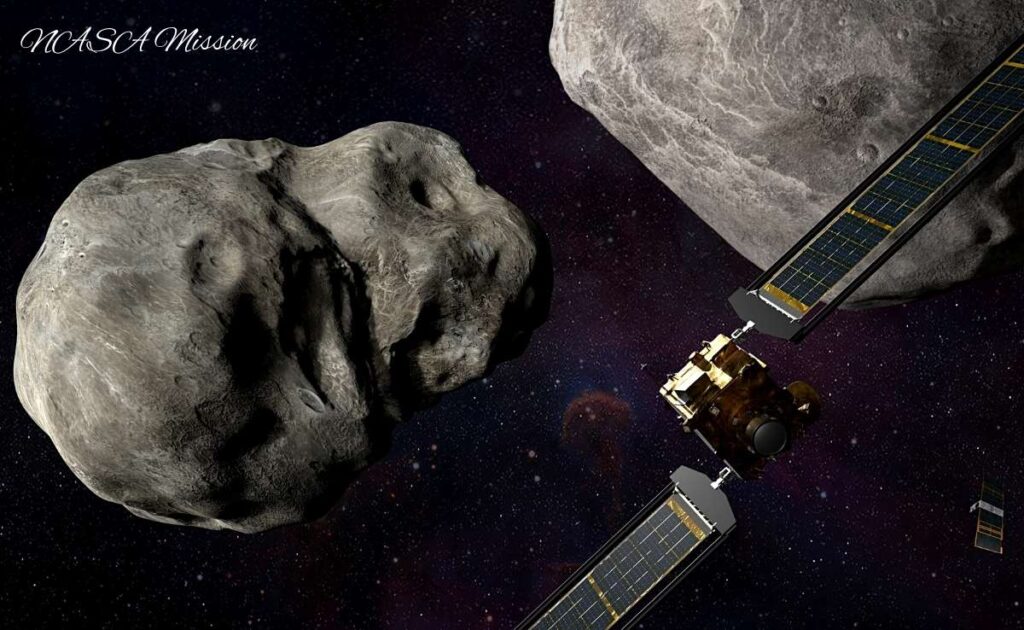NASA is preparing to bludgeon a tiny, fairly innocuous meteorite thousands of kilometers away in a first-of-its-kind, save-the-world laboratory activity. On September 26th, a space probe labeled Dart will target the exoplanet and collide with it at 14,000 miles per hour (22,500 kph).
The repercussions should be sufficiently powerful to push the exoplanet into a fairly tight circle around its assistant piece of rock, illustrating that if a deadly asteroid ever comes our way, we have a chance to compete for deflecting it.
Cameras and borescopes will monitor the collision, but it will take some months to understand whether it altered the flight path. Dart’s liftoff last autumn kicked off the $325 million planet-wide defense test.
Asteroid Target
Dimorphos, the space rock with the bull’s eye, is about 7 million miles (9.6 million kilometers) from our planet. It is definitely the diminutive partner in the crime of Didymos, a 2,500-foot (780-meter) exoplanet labeled after the Greek word for the doppelganger. Didymos, explored in 1996, is spinning so quickly that researchers theorized it ejected stuff that later formed a celestial body.
Dimorphos, which quantifies about 525 feet (160 meters), orbits its family body at a range compared with fewer than a mile (1.2 kilometers). NASA continues to maintain that neither asteroid poses a risk to Earth currently or in the long term. This is the reason the duo was chosen.
Dart Spacecraft Overview
The Dart — short for Double Asteroid Routing Test — was planned with a straightforward aesthetic by Johns Hopkins, considering that it is primarily a sledgehammer and continues to face certain ruination. It only has one tool: a webcam for maneuvering, aiming and documenting the meaningful rules.
Dimorphos, which is thought to be primarily a wreckage heap, will appear as a light source an hour prior to actual consequences, towering progressively larger in images captured and returned to Earth. Supervisors are convinced that Dart will not collide with the significantly bigger Didymos by accident.
The guidance system of the space probe is intended to differentiate between the two pieces of space debris and, in the last 50 minutes, attack the smaller one. Unless Dart misjudges—and NASA believes the chances of that happening are less than 10%, Dart’s apprenticeship will come to an end.
How Will The Operation Save The Earth?
Every 11 hours and 55 minutes, teensy Dimorphos cluster into big Didymos. Dart’s effect could perhaps cut that time by around ten minutes. But even though the attack ought to be obvious, this should take several months to affirm the moonlet’s modified flight path. Dart’s cams and a small coattail rider antenna will record the close-up crash.
Dart absolutely reeks Dimorphos, sending channels of stones and grime spiraling into the universe, and reflectors on all inhabited continents, as well as the Hubble and Webb spatial borescopes and NASA’s asteroid-hunting Lucy space probe, may see a massive explosion.
The combination will be monitored by earth observation satellites as they circle the sun to determine whether Dart changed Dimorphos’ travel course. A European probe simply called Hera will recapture Dart’s journey in 2024.
Conclusion
On September 26th, a space probe labeled Dart will target the exoplanet and collide with it at 14,000 miles per hour (22,500 kph). Cameras and borescopes will monitor the collision, but it will take some months to understand whether it altered the flight path. Dimorphos, the space rock with the bull’s eye, is about 7 million miles (9.6 million kilometers) from our planet.
Supervisors are convinced that Dart will not collide with the significantly bigger Didymos by accident. The time for Dart’s apprenticeship will be up. The impact of Dart might reduce that time by about 10 minutes. The close-up crash will be captured on camera by the Dart’s cameras and a tiny coattail rider antenna.
FAQs
NASA is preparing to bludgeon a tiny, fairly innocuous meteorite thousands of kilometers away in a first-of-its-kind, save-the-world laboratory activity.
The earth observation satellites will monitor the combination as they circle the sun to see if Dart shifted Dimorphos’ flight path.
Dart’s voyage will be recapped by a European space probe simply called Hera in 2024.
Johns Hopkins designed Dart.
Dimorphos, the space rock with the bull’s eye, is about 7 million miles (9.6 million kilometers) from our planet.
